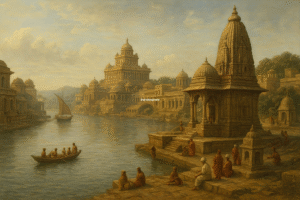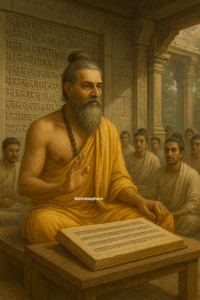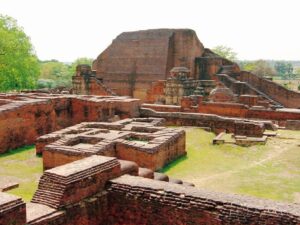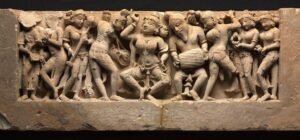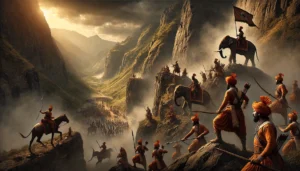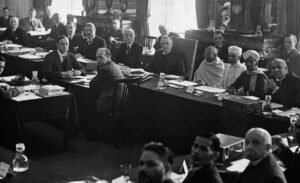The Pandyan Empire, one of the ancient Tamil dynasties of South India, is a unique example of longevity and cultural flourishing. With roots stretching back to prehistoric times and a legacy that endured into the late medieval period, the Pandyans shaped the history, culture, and religion of South India. Their governance, military conquests, patronage of the arts, and devotion to Hinduism ensured their place as one of the most influential empires in history.
At its height, the Pandyan Empire played a central role in the Indian Ocean trade network and significantly contributed to the growth of Hinduism in Tamil Nadu and beyond. The temples they built, the literature they supported, and their adherence to Vedic and Shaivite traditions reinforced Hinduism‘s prominence in South India. This article explores the rise, reign, and legacy of the Pandyan dynasty, with a special focus on their religious patronage and how Hinduism flourished under their rule.

Origins of the Pandyan Dynasty: A Mythical and Historical Foundation
The origins of the Pandyan dynasty are steeped in a mix of myth and historical evidence. According to Tamil legends, the dynasty was established by Kulasekara Pandyan, a descendant of the warrior goddess Meenakshi, considered an incarnation of Parvati, and her consort Sundareswarar, a form of Lord Shiva. The sacred city of Madurai, the heart of Pandyan power, is believed to have been founded around their divine union.
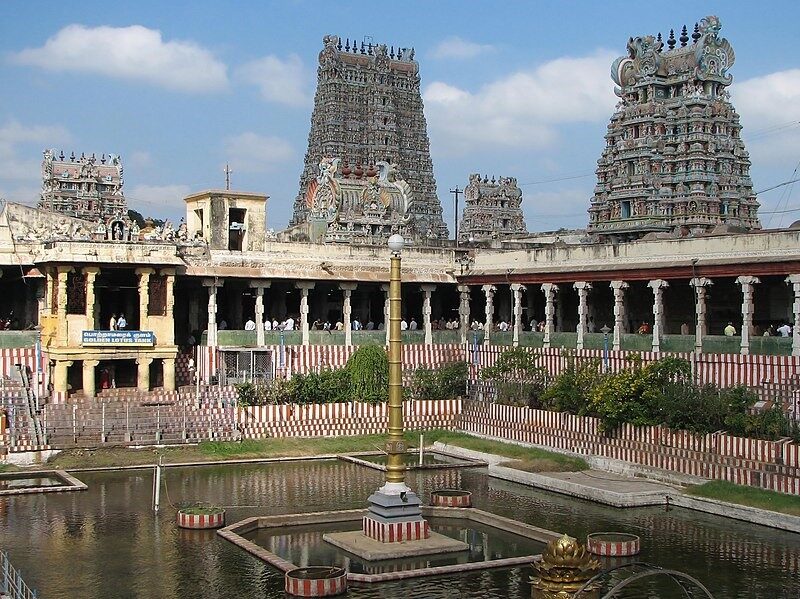
This mythological narrative is closely tied to the Pandyans’ deep association with Hinduism. They considered themselves protectors of Vedic and Shaivite traditions, often referring to themselves as “Sivapathasekarar” (devotees of Lord Shiva). These claims highlight the dynasty’s alignment with Hindu religious identity.
Historical references to the Pandyans begin in the Sangam Age (6th century BCE–3rd century CE), the period of early Tamil literature. The Pandyans are frequently mentioned in the Sangam texts, which depict them as warrior kings, cultural patrons, and supporters of Hindu religious practices. Greek and Roman historians like Megasthenes also noted their wealth and prosperity, referring to their pearl fisheries and flourishing trade.
The Sangam Age: Early Kings and the Flourishing of Hinduism
The Sangam Age, often called the Golden Age of Tamil Literature, was a formative period for the Pandyan dynasty. The kings of this era, such as Nedunjeliyan I and Mudukudumi Peruvazhuthi, are praised in Tamil poetry for their devotion to Hindu gods and their contributions to Vedic rituals.
Patronage of Hinduism
The Pandyans were deeply committed to Hinduism, particularly Shaivism, and saw themselves as custodians of sacred traditions. They sponsored yajnas (Vedic sacrifices), constructed temples dedicated to Shiva, Vishnu, and other deities, and supported Brahmin scholars who preserved Vedic knowledge.
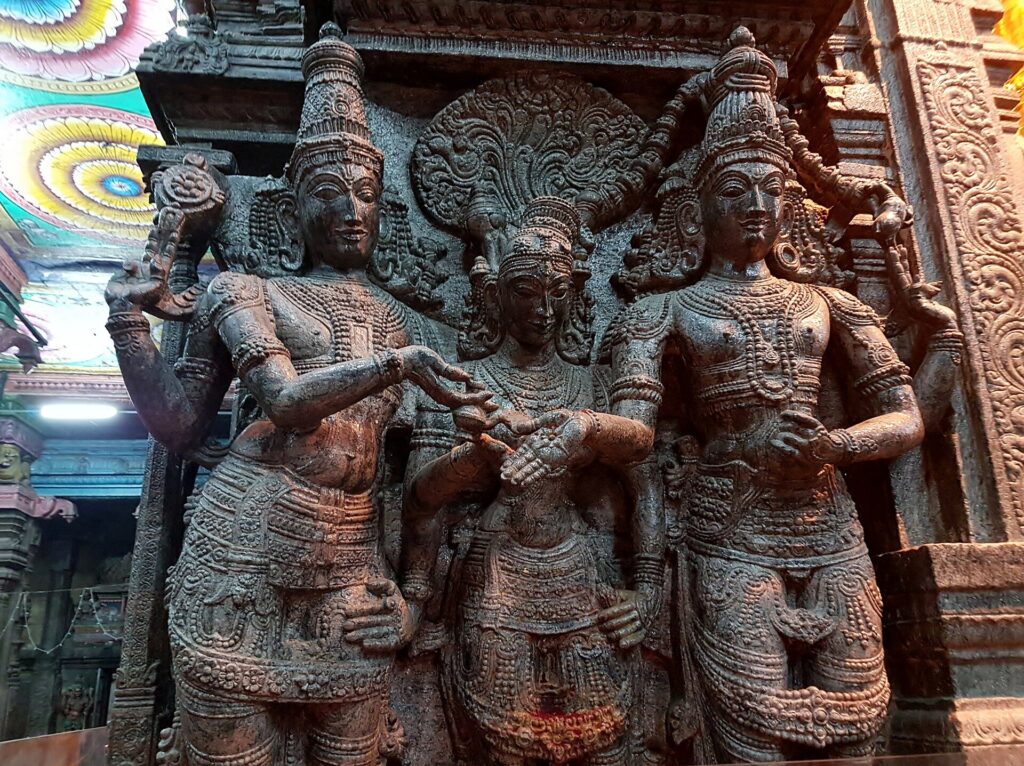
One of the notable kings, Mudukudumi Peruvazhuthi, conducted numerous Vedic sacrifices, earning him the title of “Peruvazhuthi,” meaning “one who performed many yajnas.” His reign is remembered for its strong emphasis on dharma and Hindu orthodoxy.
Cultural and Religious Integration
The Sangam Age also saw the integration of Tamil culture with Hinduism. The Tirukkural, a Tamil ethical treatise composed during this time, reflects Hindu ideals of dharma (righteousness), aram (virtue), and kaamam (desire). The Pandyans’ patronage of Tamil literature played a crucial role in blending local traditions with broader Hindu philosophies.
Medieval Pandyan Empire: Hinduism at Its Zenith
The Pandyan Empire reached its height during the medieval period (9th–14th centuries CE), under rulers like Jatavarman Sundara Pandyan and Maravarman Kulasekara Pandyan. This era marked the expansion of Hinduism, the construction of grand temples, and the consolidation of religious practices.
Jatavarman Sundara Pandyan (1251–1268 CE): The Warrior King and Temple Builder
Jatavarman Sundara Pandyan is regarded as one of the greatest rulers in Pandyan history. His reign was marked by military conquests, economic prosperity, and a renewed focus on Hindu temple-building.
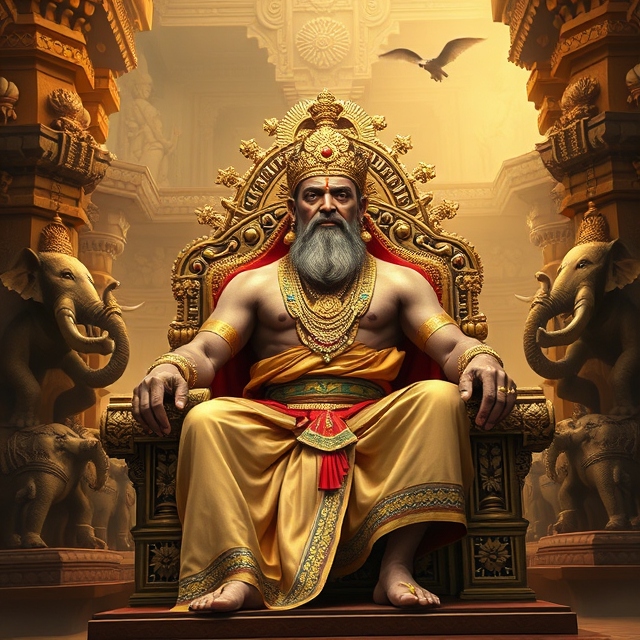
- Military Expansion: Jatavarman Sundara Pandyan defeated the Cholas, Cheras, and Hoysalas, extending the empire’s reach across South India. He also invaded Sri Lanka and brought back sacred Hindu relics from the island nation, further solidifying the Pandyans’ role as protectors of Hinduism.
- Temple Patronage: The king generously funded the renovation and expansion of major temples, including the Chidambaram Nataraja Temple and the Srirangam Ranganathaswamy Temple. He donated gold and jewels to these temples, enriching their cultural and spiritual significance.
- Promotion of Shaivism and Vaishnavism: Although primarily Shaivite, the Pandyans also supported Vaishnavism, demonstrating a commitment to a pluralistic Hindu tradition.
Maravarman Kulasekara Pandyan (1268–1308 CE): The Preserver of Hindu Dharma
Maravarman Kulasekara Pandyan continued his predecessor’s legacy, focusing on preserving and expanding Hinduism. During his reign:
- He promoted Vedic traditions and ensured that temples remained centers of spiritual and cultural life.
- He supported Brahmin scholars and the composition of devotional Tamil hymns, known as the Divya Prabandham, which celebrated Vishnu and Shiva.
- He maintained alliances with other Hindu rulers to counter the growing influence of Islamic forces in North India.
The Role of Temples in Pandyan Society
Temples were the lifeblood of the Pandyan Empire, serving not only as places of worship but also as centers of education, art, and community life. Pandyan kings constructed grand temples that reflected the ideals of Dravidian architecture.
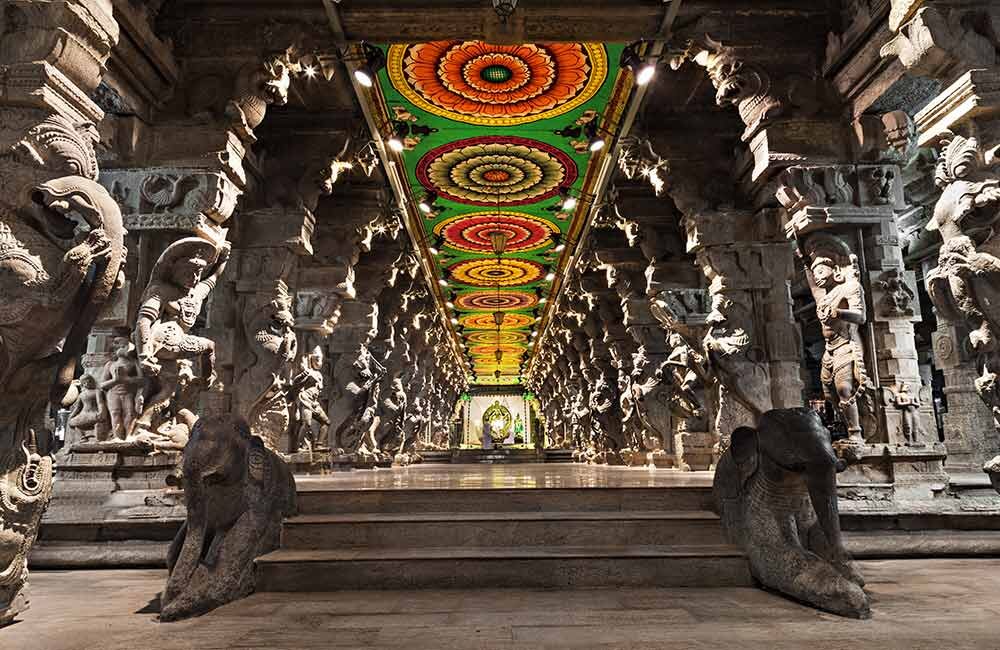
Architectural Marvels
The Pandyans pioneered several architectural innovations, which became hallmarks of South Indian temple design. Their contributions include:
- The Meenakshi Amman Temple in Madurai: Dedicated to Goddess Meenakshi and Lord Sundareswarar, this temple is a masterpiece of Pandyan architecture. Its intricate carvings, towering gopurams (gateway towers), and extensive halls reflect the dynasty’s devotion and artistic excellence.
- The Nellaiappar Temple in Tirunelveli: This temple, dedicated to Lord Shiva, exemplifies the Pandyan commitment to Shaivism.
Centers of Religious and Cultural Activity
Temples under the Pandyans were more than just places of worship. They hosted:
- Educational Institutions: Temples were centers of learning where Vedic knowledge, Tamil literature, and classical arts were taught.
- Art and Music: The temples encouraged the development of Bharatanatyam, a classical dance form, and Carnatic music, both of which were closely tied to Hindu devotional practices.
- Community Gatherings: Festivals and religious ceremonies attracted people from all walks of life, fostering unity and cultural exchange.
Trade, Prosperity, and Religious Outreach
The Pandyan Empire’s wealth, derived from trade, played a crucial role in their religious patronage. The empire’s ports, such as Korkai and Tuticorin, were bustling centers of commerce, exporting pearls, textiles, and spices.
Maritime Trade and Hindu Influence
Pandyan merchants carried Hindu culture and traditions to Southeast Asia, influencing kingdoms in modern-day Indonesia, Malaysia, and Cambodia. Temples dedicated to Hindu deities, such as the Angkor Wat in Cambodia, bear testimony to this cultural exchange.
The wealth generated from trade was invested in building temples and sponsoring religious institutions, further solidifying the Pandyans’ role as champions of Hinduism.
Challenges and Decline: The Impact on Hinduism
The 14th century brought immense challenges to the Pandyan Empire, including invasions by the Delhi Sultanate and internal conflicts.
Invasion by the Delhi Sultanate
In 1311 CE, Malik Kafur, a general of Alauddin Khilji, led a campaign against the Pandyans, plundering Madurai and desecrating temples. This invasion marked a significant blow to the empire and disrupted Hindu religious life.
Internal Strife and Fragmentation
Succession disputes among Pandyan princes weakened the dynasty, allowing rival powers like the Vijayanagara Empire and the Madurai Sultanate to assert control over Tamil Nadu.
Despite these challenges, Hinduism remained resilient. The Vijayanagara rulers, who succeeded the Pandyans, continued their legacy of temple-building and Hindu revivalism.
Legacy of the Pandyan Empire
The Pandyan dynasty’s contributions to Hinduism, Tamil culture, and South Indian history are profound and enduring.
Cultural and Religious Impact
The temples they built, such as the Meenakshi Amman Temple, remain iconic symbols of Tamil Hindu culture. The devotional hymns composed during their reign continue to inspire millions of Hindus worldwide.
Preservation of Tamil and Vedic Traditions
The Pandyans ensured that Tamil literature and Hindu Vedic traditions coexisted harmoniously, creating a unique cultural synthesis that defines Tamil Nadu to this day.
Influence Beyond Borders
Through trade and cultural outreach, the Pandyans spread Hinduism to Southeast Asia, leaving a lasting impact on the region’s art, architecture, and religious practices.
The Pandyan Empire stands as a remarkable example of a dynasty that combined military strength, economic prosperity, and cultural brilliance. Their unwavering commitment to Hinduism, reflected in their temples, rituals, and patronage of art, ensured the religion’s growth and resilience in South India.
Although the empire eventually declined, the Pandyans’ legacy lives on in the temples of Tamil Nadu, the verses of Tamil poets, and the enduring traditions of Hindu worship. They were not only rulers but also visionaries who saw religion, culture, and governance as intertwined facets of a thriving civilization. The Pandyan Empire’s story is one of resilience, devotion, and unparalleled contribution to the spiritual and cultural heritage of India.

